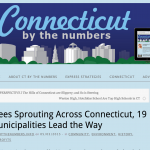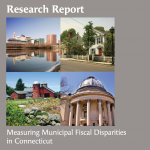A tool for community assessment and improvement
Wednesday, May 27
Webinar – 10:00 – 11:30 am/eastern
Presenters:
Daniel Eades Extension Specialist, Rural Economics, West Virginia University Extension Service
Laura Brown, Community & Economic Development Educator, University of Connecticut Extension
*******************************************
Use the following link to join the webinar:
https://global.gotomeeting.com/join/292212341
Audio connection:
+1 (872) 240-3212 Access Code: 292-212-341
As the old saying goes, “you never get a second chance to make a first impression.” For first time visitors, the way a community presents itself is of equal importance. The look and feel of the community experienced by a visitor will most likely influence how long they stay, if they will return, and whether or not they will speak about the community positively or negatively. The First Impressions program is a structured assessment and participation tool designed to provide communities with a fresh look at strengths and shortcomings through the eyes of first-time visitors. The program is often integrated into existing planning processes and is a dynamic way to engage new audiences and leaders in planning processes. Through the program, volunteer teams undertake unannounced visits, record observations, and give constructive feedback to an exchange community. Team members receive training, conduct the visit and develop presentations and reports that may be used by the partner community inform community policy and action. Participants in the webinar will learn how the First Impressions program works, how to use data collected from a First Impressions visit, and roles for Extension colleagues in implementing the program. Future webinars will discuss innovative adaptations that focus on tourism, revitalizing urban neighborhoods, and engaging new and diverse audiences including youth and millennials as well as a proposed regional evaluation project.
The First Impressions Program was first developed by Andrew Lewis, University of Wisconsin, Cooperative Extension, and James Schneider in the early 1990s. Since then the program has been evaluated extensively at the community level and adapted for use by Extension programs across the United States and Canada. The program draws from goals and processes of both traditional needs assessments (Watkins, Leigh, Platt, & Kaufman, 1998) and asset-based community economic development strategies (Kretzmann & McKnight, 1993; Mathie & Cunningham, 2003) to construct an inventory of a location’s assets and challenges that can be used to raise local awareness and guide public action from within.
Save the date! Join us for additional webinars in this series:
- Wed, June 24: 10-11:30 am/eastern Adaptations of the First impressions Program: Tourism Destinations, Small Communities, Main Streets, Urban Neighborhoods
- Thursday, July 23: 10-11:30 am/eastern Adaptations of the First Impressions Program for unique audiences: Engaging youth and millennials
- Wed, August 19: 10-11:30 am/eastern Evaluating the Effectiveness of the First Impressions Program in the Northeast: A Discussion of Scholarship
This webinar series is made possible through a “Regional Collaboration of Successful CRD Extension Programs Planning Grant” from the Northeast Regional Center for Rural Development.




 The Arbor Day Foundation also has a campus program, designating colleges and universities as a Tree Campus USA. The University of Connecticut is the only college in Connecticut to earn the designation.
The Arbor Day Foundation also has a campus program, designating colleges and universities as a Tree Campus USA. The University of Connecticut is the only college in Connecticut to earn the designation.